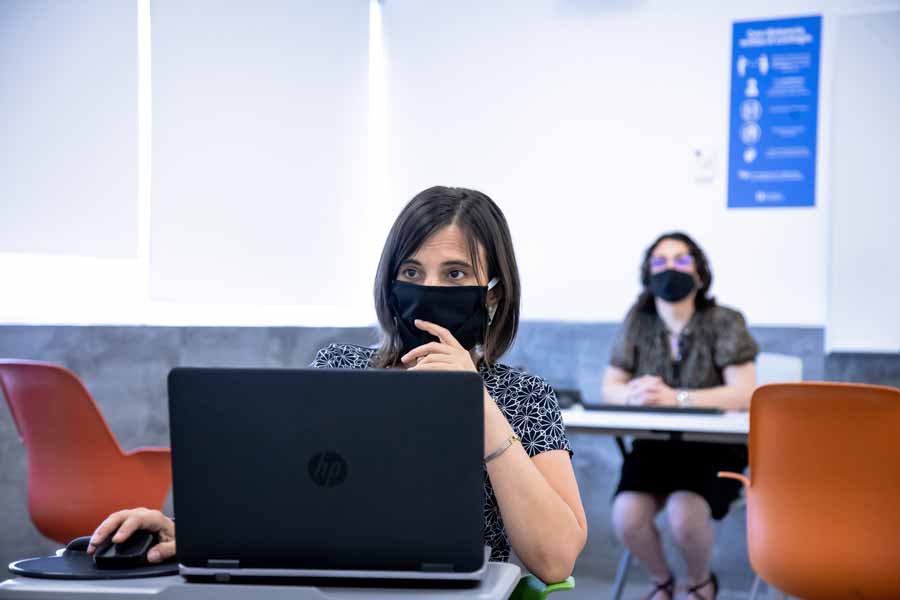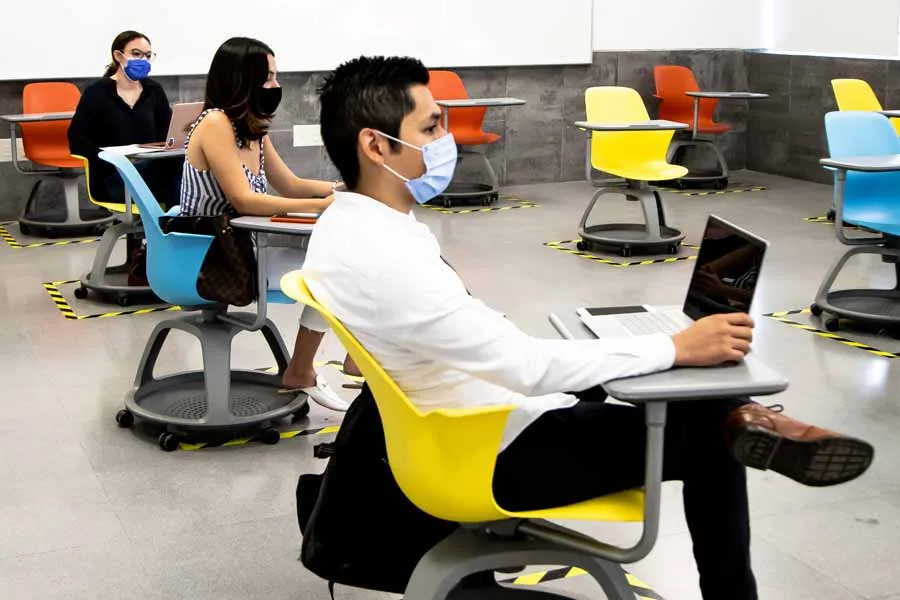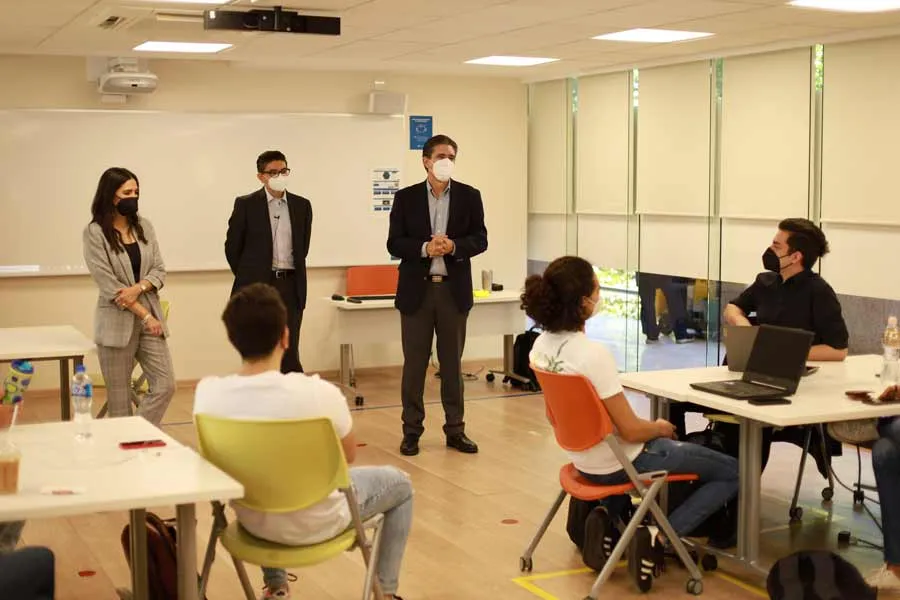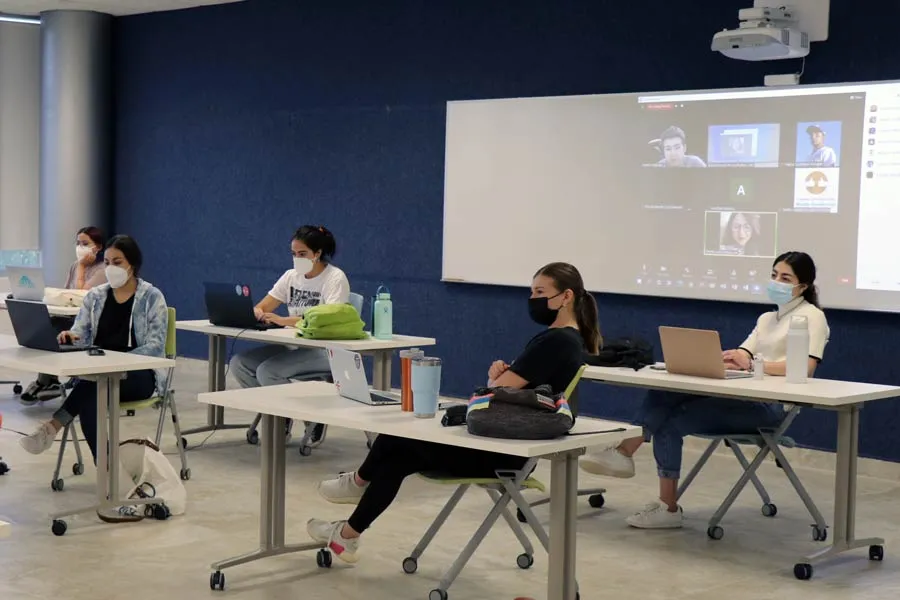In October 2020, Tec de Monterrey set up Hybrid Simultaneous Remote and Face-to-Face classrooms (HPRS for their initials in Spanish), in order to guarantee teaching and learning standards and thereby strengthen academic excellence.
Víctor Gutiérrez, rector of Operations at the Tec, said that a significant investment has been made in these classrooms to achieve hybrid classes.
“Hybrid classes allow a teacher to be in a classroom with a certain number of students, but at the same time teach other students connected remotely.
“We’ve reconfigured 650 classrooms on all our campuses, where we’ve invested in ambient sound, cameras, monitors, in a structure that allows us to achieve this shared experience,” he said.

Hybrid classrooms: an investment for the best education
Hybrid classrooms enable face-to-face and remote classes to be given simultaneously. To do this, each classroom has a range of resources that must include, at the very least, the following:
- A video camera with a motion sensor to follow professors as they teach and move around the classroom
- A clip-on microphone to ensure that students hear what teachers are saying
- Two projectors that contribute to flexibility of classes and teaching styles
- Ambient speakers that connect students learning remotely
- A computer and the Zoom Pro tool for teachers that allows flexibility for class exercises and teacher-student interaction

Similarly, professors have access to information technology resources, such as the Kaltura platform, a tool for managing multimedia resources.
Another example is CANVAS, which is a platform for communication, handing in assignments and projects, and administration of the entire course.
They also have support from their campus’ Information Technology (IT) department, who ensure that the technology doesn’t fail.
In each of their sessions, they also have face-to-face and online assistants, who support them in the event of any failure, query, or technical problem.
“We’ve prepared 650 of these classrooms for high school, undergraduate, and graduate students. Our technology is standardized, which will allow us to offer the same experience at all our campuses,” said Elsa Romero, the national director of Infrastructure and Development.

The Tec’s distinctive use of technology
Teachers have been trained to ensure that classes meet Tec standards, supervised by the Center for Teacher Development and Educational Innovation (CEDDIE for its initials in Spanish).
This is a specialized center for teachers. Training included 5 courses, plus a “zero class”, in which teachers have a trial session.
“All this effort is for our students. A huge effort has been made by the Tec and its teachers, who have received training, redesigned their classes, and learned new ways of teaching,” pointed out Verónica Rangel, director of Academic Services for the Western Region.
“The use of technology has been a distinguishing factor of the Tec in all our educational models and in our history in general. The pandemic has helped us to consolidate this model of innovation that we’re going to keep, because it improves collaboration,” said Rangel.
“The use of technology has been a distinguishing factor of the Tec in all our educational models and in our history in general.”
Since the beginning of 2021, Tec de Monterrey has opened voluntary academic and recreational activities on 16 campuses and in 8 high schools. The HyFlex+Tec hybrid format model was set up on 6 campuses.
In line with advice from state and federal authorities, a new pilot program began in March 2021 to increase the number of voluntary in-person activities for students.
These activities include laboratory practice, cultural activities, sports, emotional counseling, and leadership. Sessions are already being given in the HPRS classrooms.
By the beginning of June 2021, Tec de Monterrey will have opened up at least 90% of its campuses.
“Rest assured that we’ve taken care of every detail to guarantee the level of education to which you’re accustomed,” Rangel concluded.

YOU’LL DEFINITELY WANT TO READ THIS TOO:





